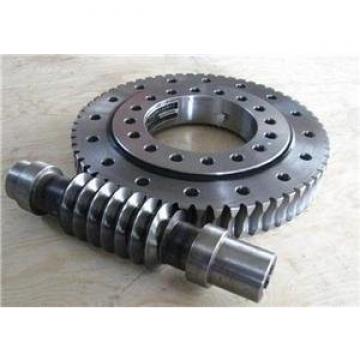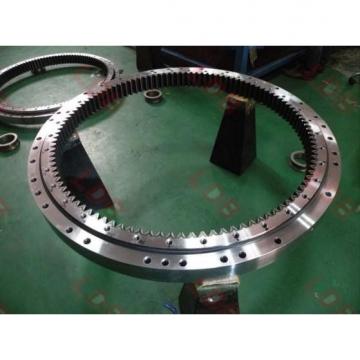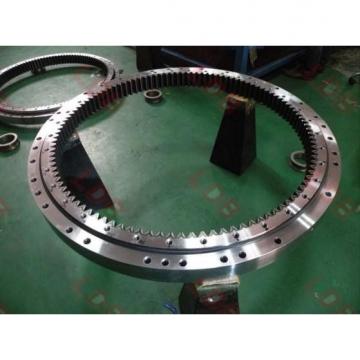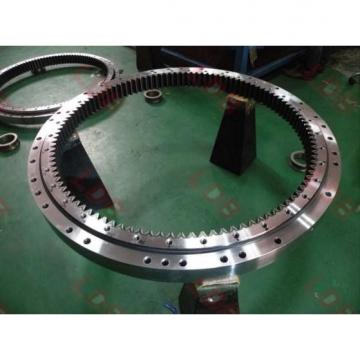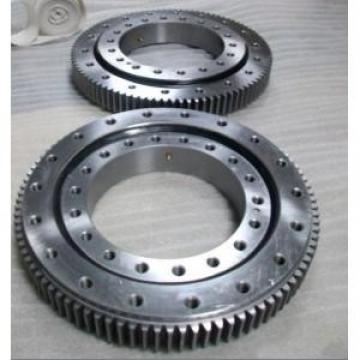All Categories
View All >Featured Products
Our Manufacturer with main products: INA Slewing Ring Bearing, SKF Turntable Series Slewing Bearing, IKO Crossed Roller Bearing
-
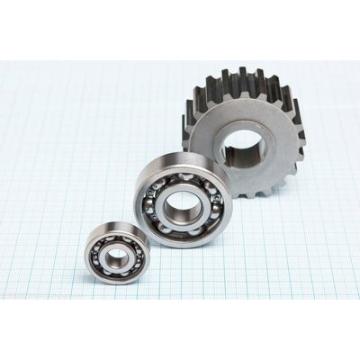 SHF-32 high rigidity bearings for harmonic drive Special
SHF-32 high rigidity bearings for harmonic drive Special
-
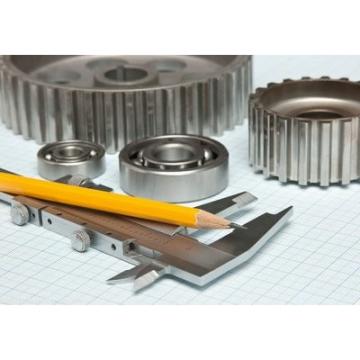 CSF-32 output bearing for CSG-32-50-GR Harmonic Reducer
CSF-32 output bearing for CSG-32-50-GR Harmonic Reducer
-
 CSF25-XRB Robot Harmonic Reducer Driver China Bearing
CSF25-XRB Robot Harmonic Reducer Driver China Bearing
-
 CRB32-HU08A harmonic reducer crossed roller bearings
CRB32-HU08A harmonic reducer crossed roller bearings
-
 SHFOP25-XRB Cuscinetti speciali a rulli incrociati
SHFOP25-XRB Cuscinetti speciali a rulli incrociati
-
 Output bearings for CSF-32 harmonic gearset
Output bearings for CSF-32 harmonic gearset
-
 SHFOP50-XRB output bearings for SHF-50-2UH harmonic reducer
SHFOP50-XRB output bearings for SHF-50-2UH harmonic reducer
-
 Tiny precision turntable bearings for harmonic drive and industrial Robot
Tiny precision turntable bearings for harmonic drive and industrial Robot
-
 CSF50-XRB Harmonic Reducer Drive Bearing
CSF50-XRB Harmonic Reducer Drive Bearing
-
 CSF65-XRB Harmonic Reducer Drive Bearing
CSF65-XRB Harmonic Reducer Drive Bearing
-
 CSF50-XRB special harmonice drive part bearings China
CSF50-XRB special harmonice drive part bearings China
-
 SHF-17-50-2UJ harmonic drive cross roller bearing
SHF-17-50-2UJ harmonic drive cross roller bearing
-
 SHF-32 Hollow Shaft Planetary Gear Bearing
SHF-32 Hollow Shaft Planetary Gear Bearing
-
 SHF-45 Harmonic speed reducer bearing
SHF-45 Harmonic speed reducer bearing
-
 HFUS-2UH units Abtriebslagerung
HFUS-2UH units Abtriebslagerung
-
 CSF17-XRB Robot Harmonic Reducer Bearing
CSF17-XRB Robot Harmonic Reducer Bearing
-
 SHF-25-50-2UH-SPK0091 reducer output bearing
SHF-25-50-2UH-SPK0091 reducer output bearing
-
 CSF17 Harmonic Reducer Robotic bearings Manufacuter China
CSF17 Harmonic Reducer Robotic bearings Manufacuter China
-
 SHF-50 Crossed roller Bearings for Harmonic Reducer
SHF-50 Crossed roller Bearings for Harmonic Reducer
-
 CSF25-XRB Harmonic Driver High rigidity crossed roller Bearing
CSF25-XRB Harmonic Driver High rigidity crossed roller Bearing
-
 CSF-25-50-GR harmonic reducer bearing CSF-25
CSF-25-50-GR harmonic reducer bearing CSF-25
-
 CSD-32 harmonic reducer output bearings
CSD-32 harmonic reducer output bearings
-
 CSF14-XRB Small robot drive bearings China harmonice
CSF14-XRB Small robot drive bearings China harmonice
-
 CSD-17 harmonic drive output bearings CSD17-XRB
CSD-17 harmonic drive output bearings CSD17-XRB
-
 CSF14-XRB Harmonic Reducer Bearing
CSF14-XRB Harmonic Reducer Bearing
-
 CSD-40-2UH harmonic drive gearhead bearing CSD40-XRB
CSD-40-2UH harmonic drive gearhead bearing CSD40-XRB
-
 CSF17-XRB robot drive bearings high rigidity
CSF17-XRB robot drive bearings high rigidity
-
 SHF-32 harmonic reducer crossed roller bearings Chinese manufacturer
SHF-32 harmonic reducer crossed roller bearings Chinese manufacturer
-
 CSF20-XRB Harmonic Reducer ROBOT Driver Bearing
CSF20-XRB Harmonic Reducer ROBOT Driver Bearing
-
 CSF20-XRB Harmonic Reducer Driver Bearing
CSF20-XRB Harmonic Reducer Driver Bearing
-
 Gearbox bearings for robotics, automaiton and machine tool industry
Gearbox bearings for robotics, automaiton and machine tool industry
-
 CSF25-XRB Harmonic Reducer Driver Bearing
CSF25-XRB Harmonic Reducer Driver Bearing
-
 SHF20-XRB anti-rust harmonic reducer bearing
SHF20-XRB anti-rust harmonic reducer bearing
-
 SHF-17 output bearing small crossed roller slewing rings
SHF-17 output bearing small crossed roller slewing rings
-
 CSF32-XRB Harmonic Reducer Driver Bearing
CSF32-XRB Harmonic Reducer Driver Bearing
-
 Robot CSF32-XRB Harmonic Drive Bearing China
Robot CSF32-XRB Harmonic Drive Bearing China
-
 CSF40-XRB Harmonic Reducer Drive Bearing
CSF40-XRB Harmonic Reducer Drive Bearing
-
 Riduttori di precisione per robot SHFOP17-XRB
Riduttori di precisione per robot SHFOP17-XRB
-
 SHF-25 output bearing for harmonic reducer
SHF-25 output bearing for harmonic reducer
-
 Crossed roller bearings CSF40-XRB Harmonic
Crossed roller bearings CSF40-XRB Harmonic
INA Slewing Ring Bearing FAQS
QWhat is about the INA Slewing Bearing design solution?
AThe bearing arrangements of the carousel and containers are based on a four point contact bearing of series VLU 20. The slewing ring is designed such that the three bearing positions in the machine can be fitted with the same bearing. The bearing arrangement: ■ allows the required centre clearance ■ allows high circumferential speeds (3,5 m/s) ■ is easy to fit and cost-effective. The bearings can support axial, radial and tilting moment loads and the bearings on the containers can also support the resulting centrifugal forces. The maximum operating temperature is +140 °C. The particular features of the bearings are: ■ ground raceways ■ guidance of the rolling elements by a brass strip cage ■ optimised surface quality in the bearing gap ■ lubrication with lithium complex grease ■ FPM seals resistant to high temperatures.
QWhat is Slewing Bearing?
ASlewing rings are also known worldwide as premium products in the field of rolling bearing technology. These machine elements have proved themselves many times over; they have high load carrying capacity, a versatile range of applications and are highly cost-effective. Due to their design, a single bearing can reliably support radial, axial and tilting moment loads. It is therefore possible in many cases to replace bearing arrangements comprising a combination of radial and axial bearings by a single bearing. This reduces, in some cases considerably, the costs and work required in the design of the adjacent construction and the fitting of bearings. Slewing rings are sealed on both sides, lubricated with a high quality grease, can be relubricated via lubrication nipples and are particularly easy to fit. The bearing rings are supplied without gear teeth or, in order to achieve simple drive solutions, are available with external or internal gear teeth.
QHow to design slewing bearing?
AFour point contact bearings These slewing rings without preload are robust and proven under very demanding operation; they place only slight demands on the flatness and perpendicularity of the adjacent construction . – they are suitable for applications with low requirements for accuracy and rigidity of the bearing arrangement, for example in simple metalworking machines, wind power equipment and construction machinery ■ crossed roller bearings – these preloaded slewing rings can support higher loads than four point contact bearings. They have proved themselves particularly where bearings are subjected to high radial forces and moderate axial and tilting moment loads – they are suitable for applications with uniform running free from stick-slip, low rotational resistance and high requirements for axial and radial runout accuracy and rigidity, for example in robots, handling systems and machine tools.
QWhat is about slewing bearing material?
AUnder normal circumstances, the turntable bearing sleeve is selected as 50Mn, but sometimes 42CrMo is used to meet the needs of the host in special applications. Scrolls generally use GCr 15SiMn. The type of holder has different structural types such as integral, segmented, and isolated blocks. The integral or segmented retaining device adopts 20 # steel or ZL102 cast aluminum alloy. The isolation block holder uses polyamide 1010 resin, ZL102 cast aluminum alloy or QA110-3-1 .5 aluminum bronze. Sealed material: oil-resistant rubber, fluorinated rubber, oil-resistant butyryl rubber. The structural forms of turntable bearings are commonly used in single row and double row four-point contact ball turntable bearings, double row angle contact push ball turntable bearings, cross cylindrical rollers and cross conical roller turntable bearings, three rows of cylindrical roller turntable bearings, ball columns. Mixed turntable bearings and other different structural forms. The above types of bearings are divided into different structures such as toothless, outer, and inner teeth according to whether they have teeth or not.
- INA Slewing Ring Bearing
- Circular scraper clarifier central dirve slewing ring bearings VLU200744
- VLI200544-N Four point contact bearing (Internal gear teeth)
- VLA200744-N Flanged Four point contact bearing
- SKF Turntable Series Slewing Bearing
- RKS.222605101001 slewing bearing external gear teeth SKF
- RKS.062.20.0644 slew ring bearing SKF turntable bearing
- RKS.062.20.0744 slewing ring bearing
- IKO Crossed Roller Bearing
- CRBH12025 A Crossed Roller Bearing
- CRBH3010AUUC1 Bearing
- CRBH 258 A crossed roller bearing
- About Us
- Company Profile
- Contact Info
- Site Map
- Sitemaps


